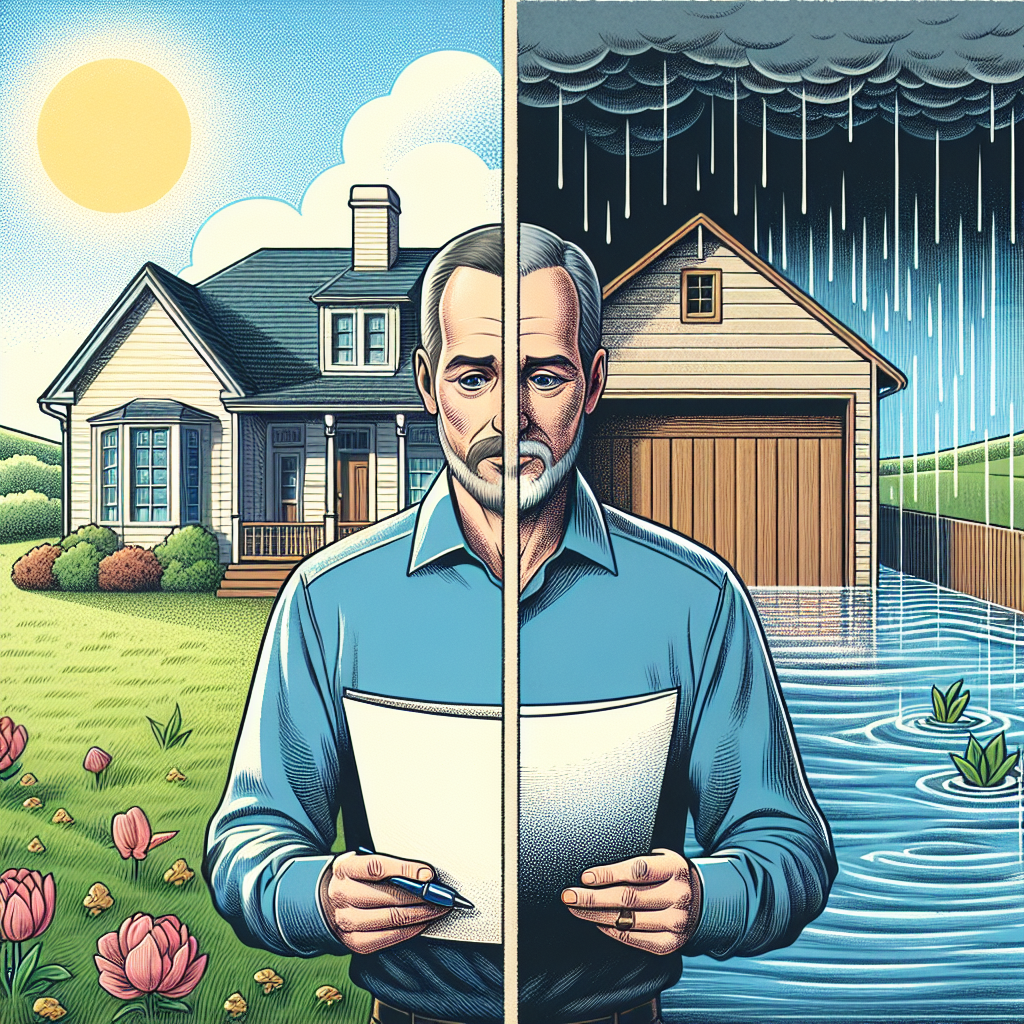Filed under Home Insurance on
Home Insurance: Covering Flooding and Suffering Claims

Home insurance is a vital safety net for homeowners, offering protection against disasters that can wreak havoc on property. Among the potential risks, flooding stands as one of the most devastating, often causing extensive damage that requires costly repairs. In addition to flooding, homeowners may find themselves contending with suffering claims, encompassing scenarios where property damage indirectly leads to emotional or psychological distress. Understanding the nuances of home insurance in these contexts ensures that you are adequately protected when the unexpected happens.
Understanding Home Insurance Coverage for Flooding
Flooding is a common natural disaster that can happen without warning, leaving homeowners with substantial repair bills. It’s crucial to know that standard home insurance policies typically do not cover flood damage. Instead, this type of coverage is often available through separate flood insurance policies.
The Importance of Flood Insurance
The National Flood Insurance Program (NFIP), managed by FEMA, provides a federally backed option for homeowners looking to protect against flooding. Many private insurers also offer flood insurance policies, sometimes with greater flexibility or additional benefits. A flood insurance policy can cover the structure of your home, often up to a specified limit, and protect personal belongings. Having this coverage is essential for those living in high-risk flood areas, but it can also be a wise investment for anyone who wants to safeguard their property against this unpredictable threat.
Evaluating Your Flood Risk
It's crucial for homeowners to assess their area’s flood risk to make informed decisions about purchasing additional coverage. Flood maps, available through FEMA's website, can help determine the likelihood of flooding in your area. Considering the potential consequences, homeowners should evaluate whether the cost of flood insurance outweighs the risk of loss, especially as weather patterns evolve due to climate change.
Handling Suffering Claims
Suffering claims, while less tangible than flooding, are just as significant. They cover instances where property damage leads to emotional distress, loss of enjoyment, or even temporary displacement. Insurance coverage for these non-material losses can vary widely, making it essential for policyholders to clarify the extent of their coverage with their provider.
Types of Suffering Claims
- Loss of Use: When a house is damaged to the point of being uninhabitable, many policies offer coverage for additional living expenses incurred while the house is repaired.
- Personal Property Loss: The emotional impact of losing treasured personal items can be hard to quantify, but some insurers offer compensation for specific items or categories.
- Displacement Stress: Being forced from your home can be traumatic, with some policies accounting for the psychological toll this may take on individuals and families.
Improving Your Coverage
To protect against suffering claims, consider talking to your insurance provider about your specific needs. Tailored riders or endorsements can sometimes be added to your policy to address potential gaps in coverage. Regularly reviewing your policy ensures that it evolves with your circumstances, offering peace of mind that you are adequately shielded from both physical and emotional harms.
Industry Trends and Expert Opinions
Industry trends show an increasing awareness of the need for comprehensive home insurance policies that address both flooding and suffering claims. As climate change leads to more volatile weather patterns, insurance companies are adapting to offer policies that better reflect these risks. Experts recommend that homeowners proactively seek to understand the terms of their policies, ensuring that essential coverages are updated in line with emerging threats.
Proactive Risk Management
Experts suggest a proactive approach to risk management that includes investing in preventative measures alongside suitable insurance policies. Simple actions, such as installing flood barriers, elevating utilities, and creating a comprehensive inventory of personal belongings, can mitigate damage and ease the claims process. Moreover, engaging in open dialogue with insurance agents about potential suffering claims can lead to more personalized policy solutions.
Future of Home Insurance
The future of home insurance will likely see greater integration of technology, such as predictive analytics, which can improve risk assessment and policy pricing. Additionally, with increased focus on mental health and well-being, there may be more extensive coverage options for suffering claims as consumer demand for mental health support continues to grow.
Conclusion
Home insurance is more than a financial product; it's a vital resource that offers security and peace of mind in times of crisis. Understanding the intricacies of what constitutes comprehensive coverage, particularly with respect to flooding and suffering claims, empowers homeowners to make informed choices. By taking proactive steps and maintaining open communication with insurers, you can ensure your home and well-being are safeguarded against both the physical and emotional toll of disasters.



